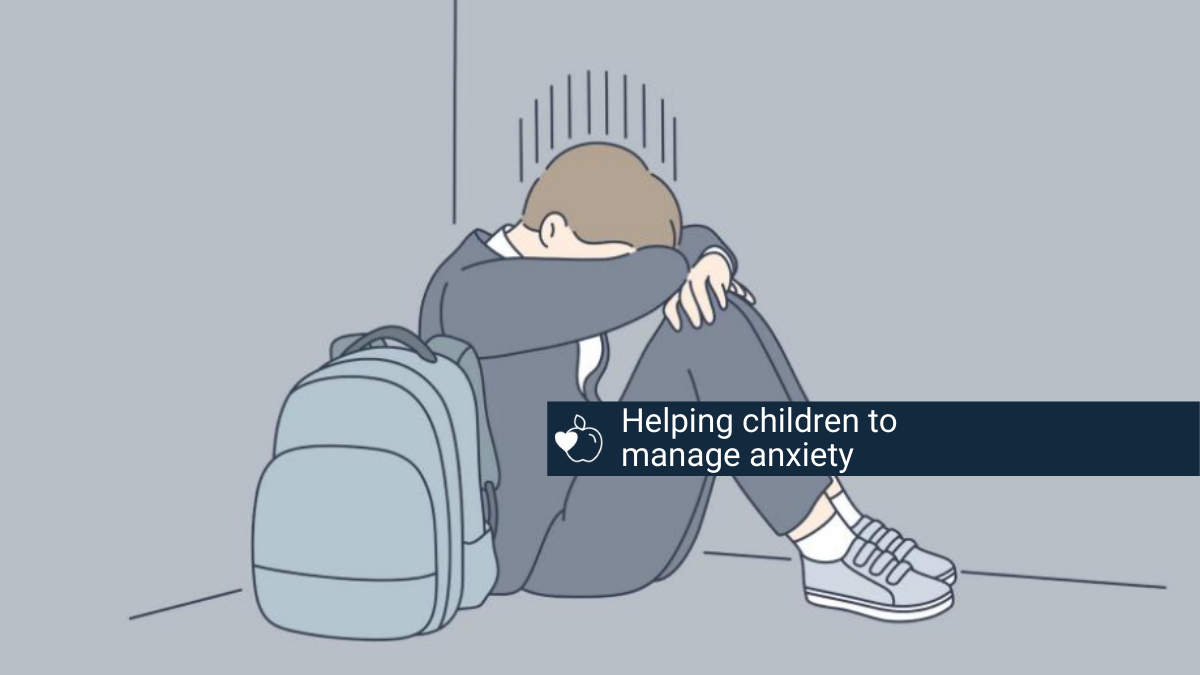In this challenging, ever-changing world, symptoms of anxiety inevitably show up in both adults and children in a multitude of ways. The fact that we now find ourselves in the midst of a worldwide pandemic also does not ease our anxiety levels. But there is good news: while anxiety cannot necessarily be avoided, it is something that can be managed.
Since early 2020, we’ve all had to adapt to a new way of living. Every part of our lives has been affected, and depending on your location and the infection numbers at any given time, rules and regulations have been adapted accordingly too. Change and uncertainty can be frightening and overwhelming, especially for children.
When faced with new situations and forced adjustments, it is normal for a child – anyone, for that matter – to experience anxiety. Anxiety can be an important way for a child to process what is happening in the world around them, but anxiety that is not properly managed can be a scary and uneasy experience for a child.
When you can see a child feeling anxious, it is important to explain to them what anxiety is, what they are feeling emotionally, and what it typically feels like to them in their bodies (racing heart, sweating, trouble breathing, etc.). This helps to normalise the feeling of anxiety, as well as make this feeling less overwhelming for the child.
Easy and fun ways to manage anxiety in children
1. Breathing exercises
When a child feels anxious, help them to control their breathing by focusing on the breaths they take. Focusing on breathing can help to calm the body and to ease the physical symptoms that come with anxiety.
An easy breathing technique for children is called the “triangle method”. This method involves a child tracing an imaginary or drawn triangle with their fingers. They begin by tracing the bottom line of the triangle and simultaneously taking a deep breath in for three seconds. They then move on to tracing the diagonal line of the triangle and holding their breath for three seconds. Next, they trace the final line of the triangle, breathing out for three seconds. This process can be repeated until the child feels at ease.
2. Mindfulness
Mindfulness is a great way to manage anxiety and it can also be fun for children to do. Mindfulness involves bringing all of your attention to the present moment. A simple way to practise mindfulness with children is by using the “54321 senses technique”. This technique incorporates all five of our senses (sight, hearing, touch, smell, and taste) and it involves encouraging children to identify five things they can see in their current environment, four things they can hear, three things they can feel, two things they can smell and one thing they can taste.
3. Stretching
Stretching is a physical activity that children can do to relieve anxiety. Stretching aids in relieving muscle tension which, in turn, helps to reduce anxiety in children. Children can also use their own creativity to come up with their own stretches.
4. Writing
It often helps to write down exactly what or how we are feeling. When we are able to see our feelings on paper, right in front of us, they often appear to be less scary compared to what they looked like in our minds. Writing down one or two words that describe how we are feeling can help us to relax and reflect on why we might be feeling anxious.
While anxiety is a normal response that helps us to process our demanding and dynamic world, it is also a very real, rather overwhelming and sometimes overpowering emotion that can easily cause children to feel scared and confused. Thankfully, if anxiety is identified in children, it can be managed, and the more serious symptoms can be minimised to a certain extent.
About the author:
As an intern psychometrist with an Honours degree in Psychology from Rhodes University, Michaela Helders is passionate about helping people of all ages. Michaela has also taught emotional intelligence programmes to young children, equipping them with the skills they need to adapt and thrive in a world that holds multiple challenges and demands.



